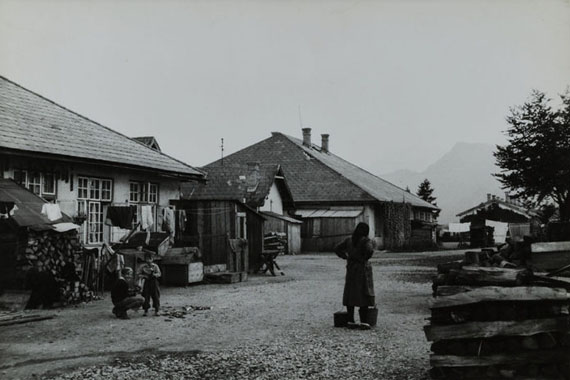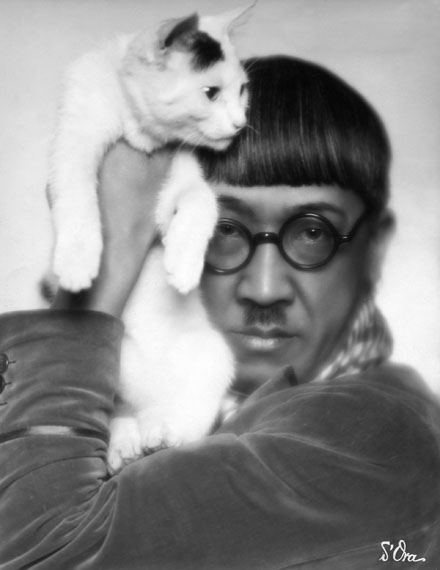
Resonance of Exile / Resonanz von Exil
Valeska Gert » Madame d'Ora (Dora Kalmus) » Lisette Model » & others
Exhibition: 14 Jul – 28 Oct 2018
Fri 13 Jul 19:00

Museum der Moderne Mönchsberg
Mönchsberg 32
5020 Salzburg
+43 662-842220
info@museumdermoderne.at
www.museumdermoderne.at
Tue-Sun 10-18, Wed 10-20

© Estate of Lisette Model, courtesy Albertina, Vienna
"Resonance of Exile" Ausstellung: 14 July ‐ 28 October, 2018
After the successful launch in 2017, the Museum der Moderne Salzburg’s exhibition series exploring the history of artists who experienced life in exile now continues with Resonance of Exile. Last year, the first presentation in the series shed light on the sharp discontinuities in the biographies and oeuvres of four women artists who were forced to leave their native countries. The new exhibition places the focus on how emigrants rebuilt their lives and careers after escaping Central Europe and how their experiences echo in their art, showcasing the oeuvres of six outstanding artists: Valeska Gert, Lisette Model, Madame d’Ora, Wolfgang Paalen, Lili Réthi, and Amos Vogel. The "resonance" in the title sums up the diverse ways in which the works they created in their places of refuge as well as after their return reflect what they went through. Model, Paalen, Réthi, and Vogel were pioneering artists who influenced the evolution of their respective métiers in their adopted countries; Gert and d’Ora, meanwhile, returned, haunted by recollections of life in exile that found expression in somber pictures and grim theatrical performances.
In the past several years, the Museum der Moderne Salzburg has taken the lead in reconstructing the life stories of émigrés and rediscovering artists who have languished in obscurity. "As part of my efforts to enhance the museum’s profile, one of my goals was to create a programming focus on chapters in art history—and especially the history of art in Salzburg and Austria—that have been forgotten or simply neglected. Our research for the major exhibition "Anti:modern" (2016), which charted historic events and phenomena in Salzburg and the region—the heart of a Europe torn between tradition and modernity—helped lay the foundations for this exhibition series, in which we highlight the disruptions in the lives and oeuvres of artists who were forced to go into exile," Director Sabine Breitwieser emphasizes. Like the inaugural exhibition "Up/Rooted" (2017), the new show brings together a wide range of artistic genres and media. Periodicals are one format that plays a signal role throughout. "Magazines were a vital source of information and professional contacts for refugees who needed to rebuild their lives and find work. Our principal example is Aufbau, a magazine published in New York that, from the mid-1930s onward, became a must-read for German-speaking Jews. Singular visual documents and valuable objects on loan from other institutions also witness to the six artists’ lives," Christiane Kuhlmann, the museum’s Curator Photography and Media Art, notes.
As we prepared the exhibition, we also issued a call for scholarly contributions in cooperation with the committee on "Women in Exile" of the German Society for Exile Studies. Selected research will be presented and discussed during a three-day symposium titled "Mediators between Cultures" that is scheduled for October 12 through 14, 2018.
�
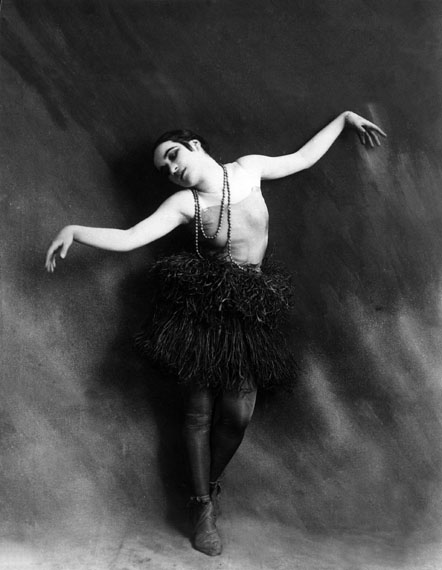
Photo: not specified © ullstein bild
"Resonanz von Exil"
Ausstellung: 14. Juli bis 28. Oktober 2018
Mit der Ausstellung "Resonanz von Exil" findet die 2017 erfolgreich am Museum der Moderne Salzburg gestartete Reihe zur Erforschung der Geschichte von Künstler_innen mit Exilhintergrund ihre Fortsetzung. Wurden im Vorjahr die biografischen und künstlerischen Brüche im Leben von vier Künstlerinnen mit Exilerfahrung vorgestellt, stehen nunmehr das Leben und Wirken von Exilant_innen am neuen Lebensort und deren Resonanz im Fokus einer Ausstellung. Für die aktuelle Thematik wird das Schaffen von Valeska Gert, Lisette Model, Madame d’Ora, Wolfgang Paalen, Lili Réthi und Amos Vogel beleuchtet. Der titelgebende Begriff "Resonanz" umfasst unterschiedliche Formen von Widerhall, den das er-zwungene Exil in den Arbeiten der Künstler_innen sowie am Ort ihrer Zu-flucht und auch nach ihrer Rückkehr in ihr Herkunftsland fand. Model, Paalen, Réthi und Vogel beeinflussten an ihren jeweiligen Wirkungsstätten maßgeblich die Entwicklung ihrer spezifischen Tätigkeitsfelder, während Gert und d’Ora die Erfahrungen des Exils nach ihrer Rückkehr in dunklen Bildern oder düsteren Stücken verarbeiteten.
Die Erforschung von Migrationsschicksalen und die Wiederentdeckung von Künstler_innen wird vom Museum der Moderne Salzburg seit einigen Jahren in führender Rolle forciert. "Eines meiner Ziele zur Profilierung des Museums war es, vergessene oder schlichtweg ignorierte Kunstgeschichte, insbesondere jene, die speziell mit Österreich und Salzburg in Zusammenhang steht, in den Fokus unseres Programms zu rücken. Die Recherchen für die Großausstellung "Anti:modern"" (2016) über historische Ereignisse und Phänomene in der Salzburger Region – inmitten eines Europas zwischen Tradition und Moderne – waren eine wichtige Grundlage für diese Ausstellungsreihe, in der wir gezielt durch erzwungenes Exil herbeigeführte Zäsuren im Werk und Leben von Künstler_innen herausarbeiten", unterstreicht Direktorin Sabine Breitwieser.
Ähnlich wie in "Auf/Bruch" (2017), der ersten Ausstellung dieser Reihe, deckt auch die Folgeausstellung künstlerisch eine Vielfalt von Genres und Medien ab, wobei das Medium der Zeitschrift sich als roter Faden durch die Ausstellung zieht. "Für die Geflüchteten am Ort ihres Exils fungierten Zeitschriften als wichtiges Informationsmedium und als Kontaktplattform für neue Betätigungsfelder. Wir verdeutlichen dies mit der Zeitschrift Aufbau aus New York, die sich ab Mitte der 1930er-Jahre zum Sprachrohr deutschsprachiger Juden und Jüdinnen entwickelte. Vom Leben der sechs Künstlerinnen und Künstler zeugen des Weiteren einzigartige Bilddokumente und wertvolle Leihgaben", so Christiane Kuhlmann, Kuratorin Fotografie und Medienkunst.
Die Ausstellungsvorbereitungen wurden von einem Aufruf zur Einreichung wissenschaftlicher Beiträge begleitet, der in Kooperation mit der Arbeitsgemeinschaft "Frauen im Exil" in der Gesellschaft für Exilforschung e. V. erfolgte.
Im Rahmen eines dreitätigen Symposiums mit dem Titel "Vermittler_innen zwischen den Kulturen", das vom 12. bis 14. Oktober 2018 stattfinden wird, werden die eingereichten Beiträge präsentiert und diskutiert.
�
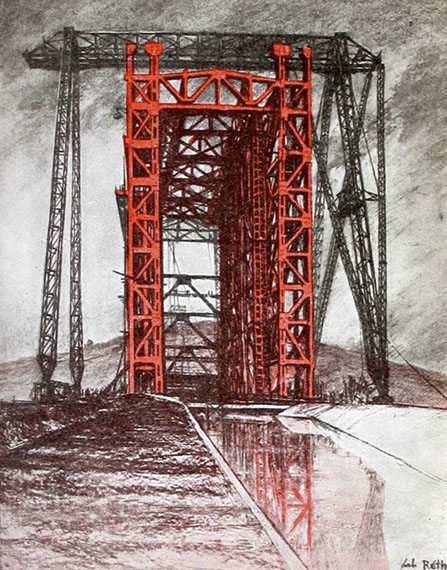
Leipzig and Vienna, 1932 © Museum der Moderne Salzburg, Foto: Rainer Iglar
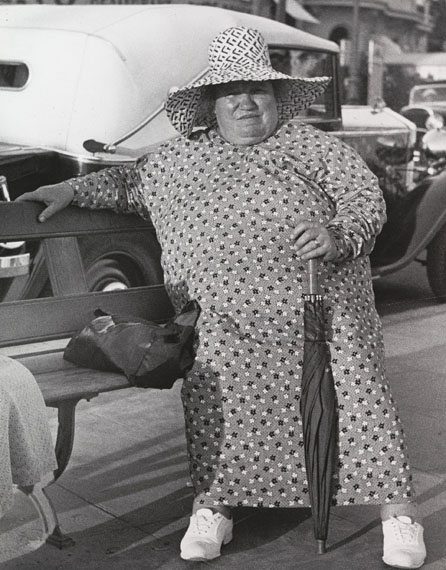
© Estate of Lisette Model, courtesy Albertina, Vienna
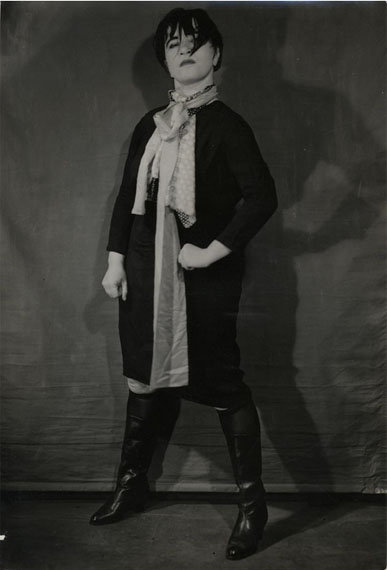
Foto: William Davis. © William Davis,
Courtesy Theaterwissenschaftliche Sammlung Universität zu Köln
